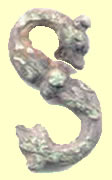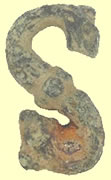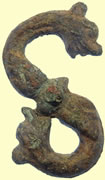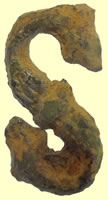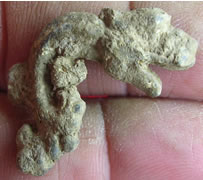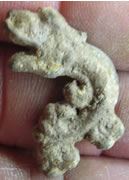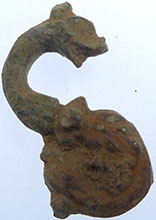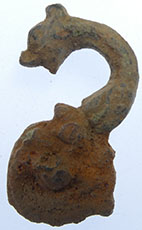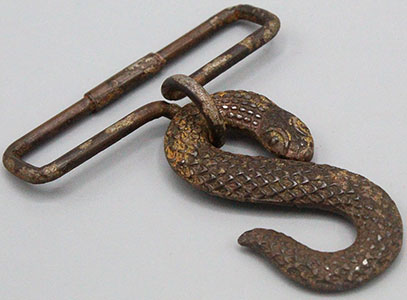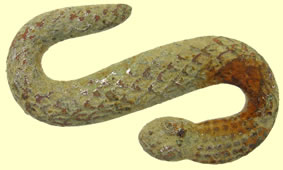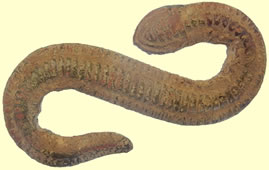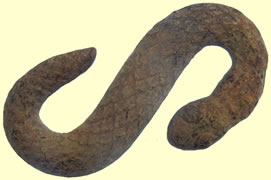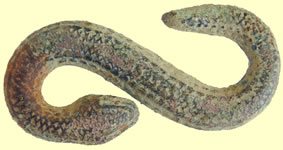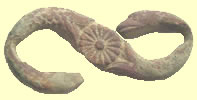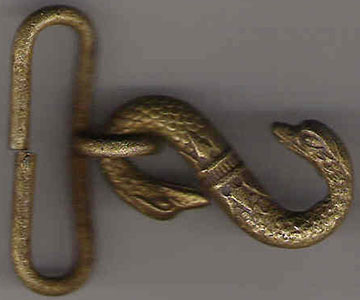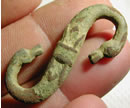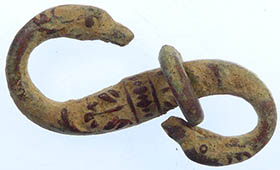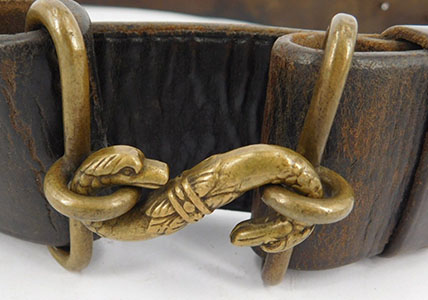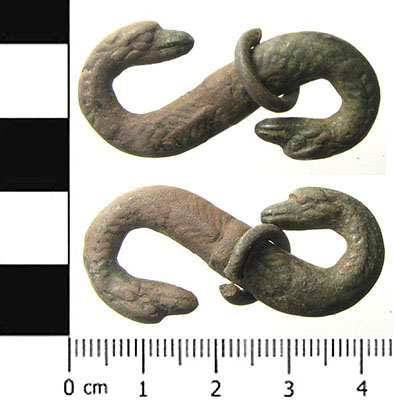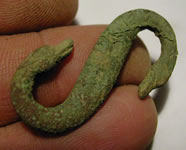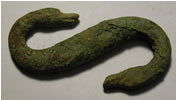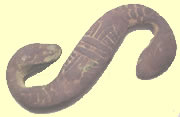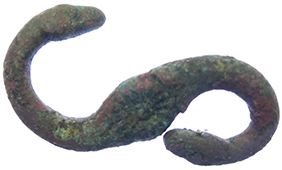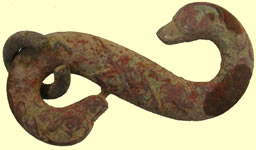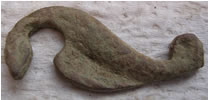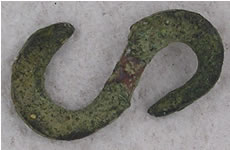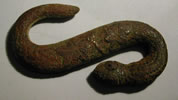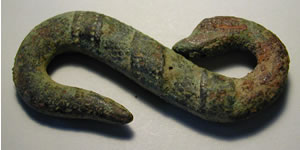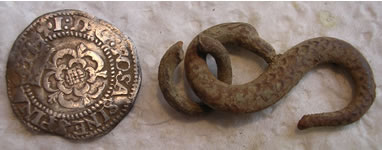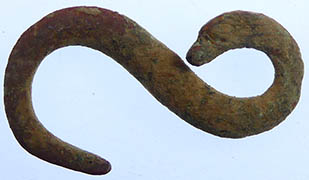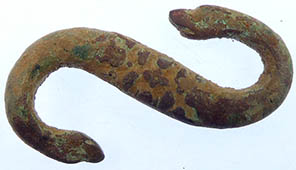

Metal detecting holidays in England with the World's most successful metal detecting club.20 years plus.
Twinned with Midwest Historical Research Society USA.
|
S type buckles Popular during the 16thC the snake buckle first appeared in portraits c 1575. This fastener formed part of a sword belt fitting and fell from fashion by the 17thC. At the end of the 18thC there was a revival in its use in the military and still continues today
|
||
|
|
||
Late Medieval S buckle |
||
c1865 U.S. Civil War dug “Snake” buckle. These style “Snake” buckles were manufactured in England and were imported into the US. These buckles commonly came with the belt rig associated with the Enfield rifle
----------------------------------------------------------------------------------------------------------------------------------------------------
Figure 1 Snake belt clasp found in excavations near the troopers’ huts, Boralga NMP camp, Cape York Peninsula.
WW1 Found in the Houthulst area( Belgian sector)
|
||
Victorian Army S buckle (NZ Army) picture
A cast copper alloy, S shaped belt fastener probably of post medieval date, AD 1550 - 1700. It is zoomorphic, being cast in the form of a snake with a head at each end. The mouths and eyes of the snake heads are clearly defined as are the scales of the body. In the centre of the fastener is a raised, circular collar flanked by leaves. A narrow ridge extends in both directions from this collar on each side of the fastener.
Single headed S buckle Cast copper alloy S-shaped zoomorphic strap fitting: a buckle or fastener in the form of snake dating from the Post-Medieval or Modern periods, about AD 1650-1900.
|
||

